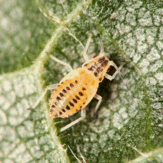- Gorm, Thyra and Harald
- The rune stones
- Gorm the Old’s rune stone
- Harald Bluetooth’s rune stone
- Basse’s rune stone
- How are rune stones read?
- The rune stones past and present
- Henrik Rantzau’s view, 1591
- Jon Skonvig, 1627
- Søren Abildgaard, 1771
- Ole Jørgen Rawert, 1819
- Adam Müller, 1835
- Jakob Kornerup, 1861
- Julius Magnus-Petersen, 1869-71
- Julius Magnus-Petersen, 1878
- Hans Andersen Kjær, 1897
- Photographs by a member of the public, 1935
- Runologist Erik Moltke, 1971
- Ludvig Stubbe-Teglbjærg’s rubbings, 1973
- Peter Henrichsen, moulding and copying in 1984
- Roberto Fortuna, 2006
- The conservation investigation 2006-08
- 3D light scanning, 2007
- Harald Bluetooth’s rune stone at home and abroad
- Pictures from Jelling
Hans Andersen Kjær, 1897
The archaeologist Hans Andersen Kjær (1873-1932) must have been in Jelling in 1897, as he left a pair of photographs from the visit in the National Museum’s archives. One of the photos shows the Christ side of Harald Bluetooth’s large rune stone. The growth, which strikes the eye from a conservation perspective, must be lichen.
A lime tree has stood east of the runes stone for more than a hundred years, placing the stone in shade during the morning hours. The result is that the stone has been more damp than it otherwise would have been and this damp has created favourable conditions for the growth of lichen. In addition, the crown of the lime tree stretched out over the stone. Every summer the crown has presumably been infested with lime greenfly (Eucallipterus tiliae). These insects have a body length of 1.8-3.0 mm. They live, often in large numbers, on the underside of lime tree leaves, where they sink their proboscises into the phloem of the leaves to suck the sap out. The sap contains protein, glucose and fructose. The greenflies utilise the protein and part of the glucose, but not the fructose. It is not absorbed into their intestines and is expelled as excrement. This excrement or honeydew is noticeable as a fine drizzle of small sticky drops, which lie as a film over whatever is under the lime tree - which in Jelling is the large rune stone. In addition, the fructose provides the lichen with better conditions for growth.
However, the lichen has not been allowed to grow unchecked. Both rune stones have been cleaned at intervals and in a letter of September 3 1902 the conservator Steffensen reports on some heavy-handed washing of the stones: “On the Museum Director Dr Mollerup’s request I have removed the layer of stone moss (lichen), which had formed on the fine and rare rune stones to Gorm and Thyra in Jelling churchyard and partly hidden the inscription and decoration. Through washing with a strong salt solution the granite’s fine colours have been brought out and the decoration is now clean and clear.”



